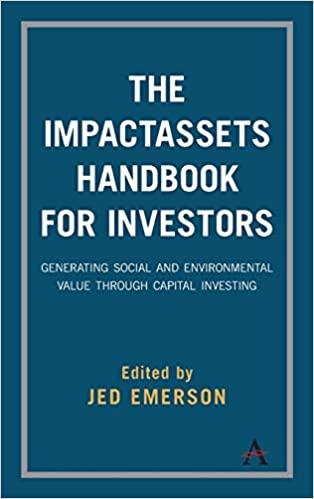Question
The Russell 1000 is a value-weighted index of the largest ~1,000 U.S. stocks. The Russell 2000 is a value-weighted index of the next largest ~2,000
The Russell 1000 is a value-weighted index of the largest ~1,000 U.S. stocks. The Russell 2000 is a value-weighted index of the next largest ~2,000 U.S. stocks. The Russell 3000 is a valueweighted index of the largest ~3,000 U.S. stocks it encompasses both stocks in the R1000 and stocks in the R2000. Use FactSet to extract end-of-year total return index values for three exchange-traded funds (ETFs) that mimic the Russell 1000 (ticker IWB), the Russell 2000 (IWM), and the Russell 3000 (IWV) from 2010 to 2016 (that is, 12/31/2010, 12/30/2011, , 12/30/2016), download this data to Excel, and compute annual returns for each index for the period 2011-2016.
2. Calculate the arithmetic average return, geometric average return and the standard deviation of returns for the three indices. Why are the return averages and the standard deviation of the R3000 closer to those of the R1000 than those of the R2000?
3. Assume that annual U.S. stock market returns are normally distributed with the arithmetic average return and standard deviation you calculated for the R3000 in your response to 2. Based on these assumptions, what is the estimated probability that investors would experience a a. one-year stock return less than 0%? b. one-year stock greater than 20%? c. one-year stock return between 0% and 20%? Do you think these are realistic estimates? Why or why not?
Step by Step Solution
There are 3 Steps involved in it
Step: 1

Get Instant Access to Expert-Tailored Solutions
See step-by-step solutions with expert insights and AI powered tools for academic success
Step: 2

Step: 3

Ace Your Homework with AI
Get the answers you need in no time with our AI-driven, step-by-step assistance
Get Started


